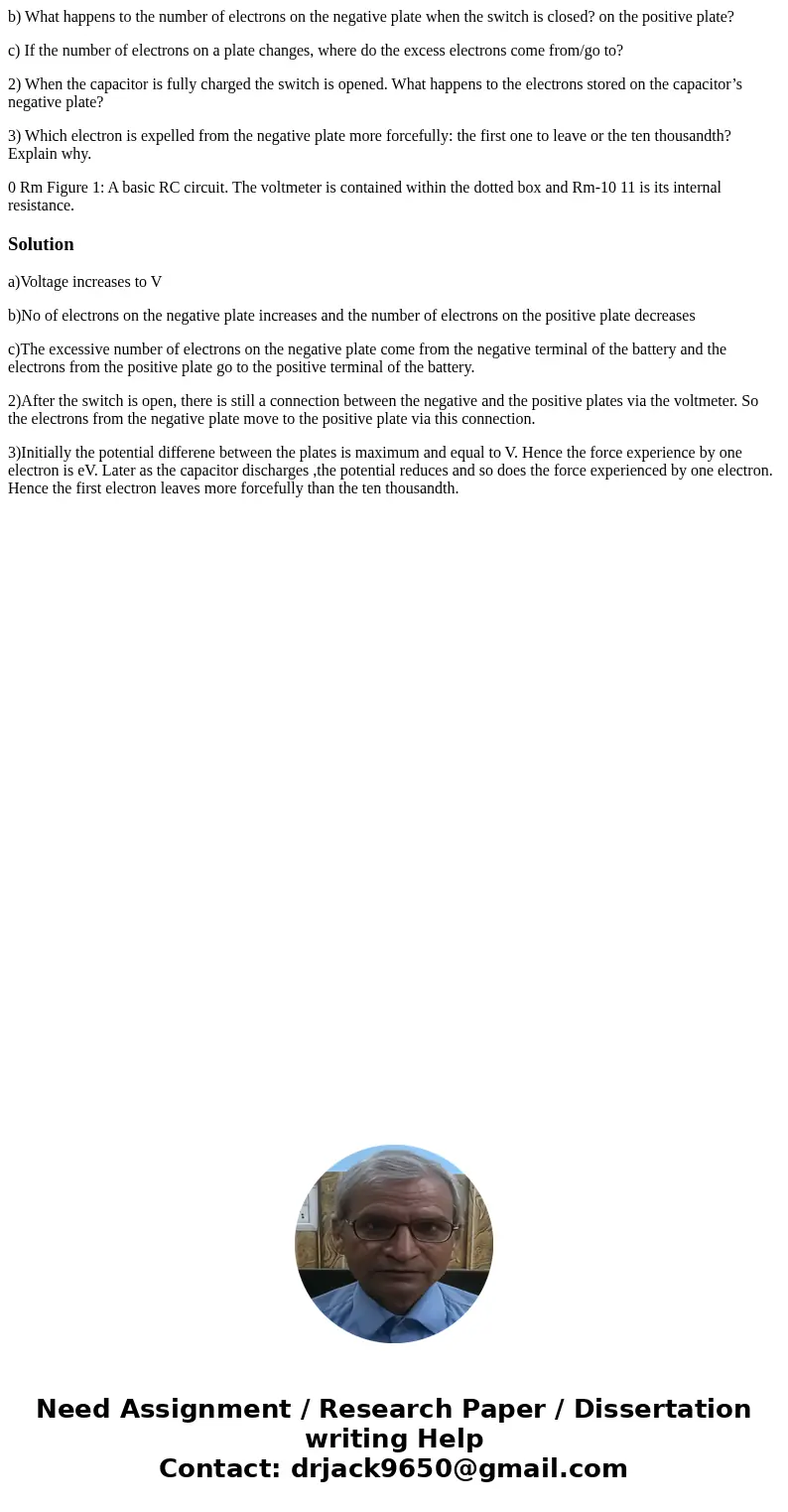b What happens to the number of electrons on the negative pl
b) What happens to the number of electrons on the negative plate when the switch is closed? on the positive plate?
c) If the number of electrons on a plate changes, where do the excess electrons come from/go to?
2) When the capacitor is fully charged the switch is opened. What happens to the electrons stored on the capacitor’s negative plate?
3) Which electron is expelled from the negative plate more forcefully: the first one to leave or the ten thousandth? Explain why.
0 Rm Figure 1: A basic RC circuit. The voltmeter is contained within the dotted box and Rm-10 11 is its internal resistance.Solution
a)Voltage increases to V
b)No of electrons on the negative plate increases and the number of electrons on the positive plate decreases
c)The excessive number of electrons on the negative plate come from the negative terminal of the battery and the electrons from the positive plate go to the positive terminal of the battery.
2)After the switch is open, there is still a connection between the negative and the positive plates via the voltmeter. So the electrons from the negative plate move to the positive plate via this connection.
3)Initially the potential differene between the plates is maximum and equal to V. Hence the force experience by one electron is eV. Later as the capacitor discharges ,the potential reduces and so does the force experienced by one electron. Hence the first electron leaves more forcefully than the ten thousandth.

 Homework Sourse
Homework Sourse